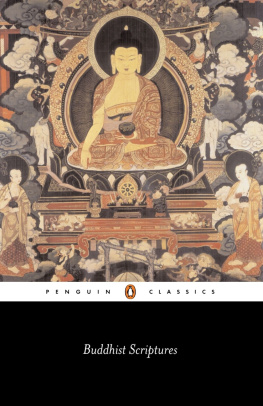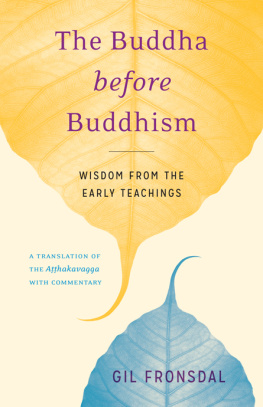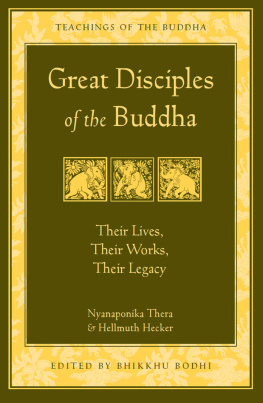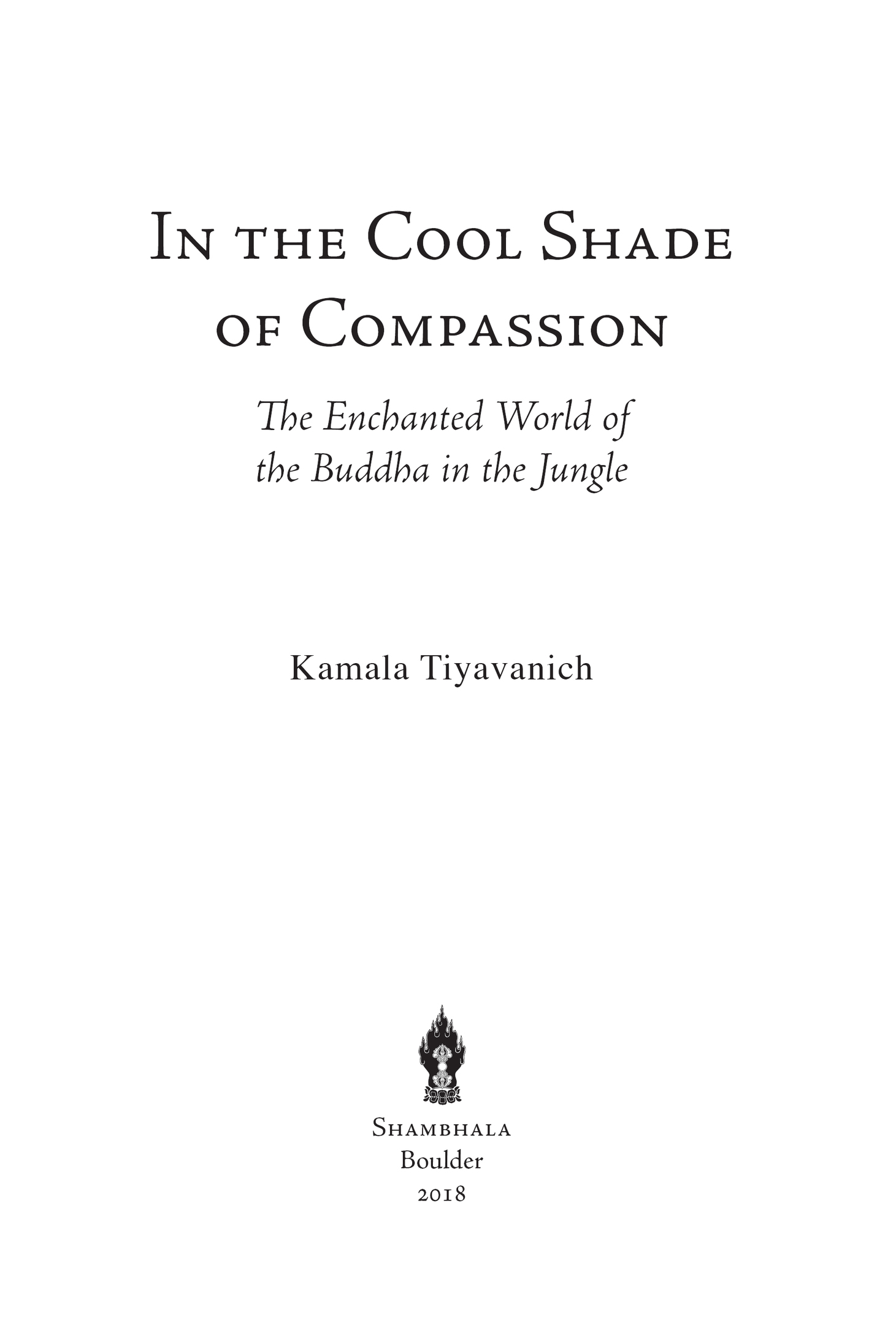Contents
This is a fascinating account told by both the Siamese themselves and their Western contemporaries of how the living dharma permeated everyday life in Siam for both monastics and laity before the advent of the rational scholastic and bureaucratic approach developed in the mid-nineteenth century. Kamala relates how the monks traditionally embodied bodhisattva principles through their relationship with the laity: at that time the bhikkhus were the teachers, healers, artisans and counselors, so the sangha had a pivotal role to play in the lives of the people.
Bhiksuni Tenzin Palmo, head of Dongyu Gatsal Ling Nunnery in India and author of Reflections on a Mountain Lake
A heart-warming narrative of the wandering lifestyle of Theravada Buddhist monks in rural Thailand between roughly the mid-19th century and the mid-20th century. It is full of accounts of monks and their relationships to lay devotees in the villages, as well as snakes, wild elephants, tigers and ghosts. The book shows the central role of mindfulness and meditation in a non-violent way of life. [It] captures the most authentic expression of Thai Theravada Buddhism in which wisdom, inner repose, and freedom of being take central place for the monks.
Christopher Titmuss, Dharma Life
Kamalas approach to historyis well worth reading, especially for Westerners who are largely unaware of the real life contexts of the Buddhism they practice. The mix of Thai and nineteenthcentury Western sources helps us see a different worldbeliefs, values, customsthrough various eyes. The early chapters also say much about the beliefs and behaviors of ordinary Buddhists. This is not the elite forest tradition that is known in the West in an idealized form, nor canonical Buddhism, nor State Buddhism. We have glimpses of Buddhism as real people lived it; that is, Human Buddhism. It is the lived Buddhism of an era that has largely faded. Those of us concerned with the vitality of Buddhism today do well to ponder its past vitalities. Many thanks to Kamala for her warm, sympathetic weaving of compelling human sources into richly textured cloth.
Santikaro Bhikkhu, Liberation Park, Chicago
Shambhala Publications, Inc.
4720 Walnut Street
Boulder, Colorado 80301
www.shambhala.com
2003 by Kamala Tiyavanich
constitutes a continuation of the copyright page.
This work was originally published in 2003 in Thailand by Silkworm Books, and in the United States by the University of Washington Press, under the title The Buddha in the Jungle.
Published by arrangement with Silkworm Books
All rights reserved. No part of this book may be reproduced in any form or by any means, electronic or mechanical, including photocopying, recording, or by any information storage and retrieval system, without permission in writing from the publisher.
Cover art by Tatsiana Volskaya/Getty Images
Cover design by Claudine Mansour Design
ISBN:9781611806496
eISBN9780834841772
Cataloging-in-Publication data is available from the Library of Congress.
v5.3.2
a
Contents
This book is dedicated to my parents
and to all my teachers.
List of Maps and Illustrations
Foreword
T HE W ESTERN ENCOUNTER WITH B UDDHISM has taken place primarily in the context of the psychology of meditation and comparative philosophy of religion. Buddhism has been evaluated in terms of its universal relevance, beyond cultures and their histories. The problem with such an approach is its tendency to abstraction and lack of connection to the realities of actual human lives, which of course are always lived in particular cultures and geographies. Now that a second generation of Western Buddhists is coming to consciousness, the question arises of what it means to live in a Buddhist culture.
Kamalas In the Cool Shade of Compassion is a richly evocative tapestry of stories about nineteenth- and early-twentieth-century Siam that vividly brings to life the Buddhist culture of the land now known as Thailand. The stories gathered hereof village monks encountering giant snakes, a Christian missionary gored by an elephant, bandits and boatmen, a dog-bodhisattva, midwives, and guardian spiritscollectively portray a Buddhist culture in all of its imaginative and geographical concreteness. It is a culture subject to the vicissitudes of historical change, both in terms of the presence of Westerners in the pursuit of their own economic and religious agendas, and in the changing politics of Buddhism itself as the Bangkok-based state attempts to impose a normative centralization on diverse local traditions. In the Cool Shade of Compassion thus accomplishes the feat of portraying a premodern Asian Buddhist culture in its difference from both the West and its own later modernization, while resisting an idealism that lifts tradition out of historical time and space. The book is both a lament for a lost world and an act of recovery by which that world speaks again to the present. Old stories of this bygone world, here told anew, have striking relevance today as we become more aware of the destructive shadow side of the modern culture that displaced this particular Buddhist past.
As a teacher of religious studies, I am grateful for In the Cool Shade of Compassion: with its vivid narrative and imagistic detail (the snake stories alone will keep students riveted!) it offers an ideal text for the study of Buddhism in specific cultural contexts. And beyond the classroom, Western Buddhists seeking to imagine ways of embodying Buddhism in Western culture will learn how Buddhism has been lived by one traditionally Buddhist Asian society. Cultures cannot imitate one another; they can, however, cross-pollinate and inspire new hybrids. As we in the twenty-first century experience the cultural changes brought about by globalization, this book offers Buddhist wisdom for such transformations, not as abstract philosophy or meditation teaching, but as an elder culture telling its tales to the young, transmitting the experience of the past to a present always in danger of falling into collective amnesia.
B RIAN K ARAFIN
Professor of Religious Studies
Ithaca College, Ithaca, New York
Foreword
R EADING I N THE C OOL S HADE OF C OMPASSION transports us beyond the smooth surface of the contemporary Thai nationstate into a premodern world of almost bewildering physical and cultural diversity. The centripetal forces of consumerism, easy communication, centralized government, state-sponsored education, and national language are not yet in ascendancy. The modern map with its tight boundaries and flat color dissolves into something like confetti.
Drawing on a wealth of ephemeral and overlooked sources such as cremation volumes, monks life stories, diaries, gossip, folklore, and interviews, Kamala restores the physical and spiritual world of the nineteenth and early twentieth centuries. Through a remarkably fresh and ingenious use of apposition, she also gives us parallel European accounts by naturalists, engineers, missionaries, and businesspeople who participate in the same events and landscapes but view them through very different interpretive frameworks. Together with them we find ourselves in a Thailand formed from wood and fiber, powered by water and human and animal energy, spatially knit together not by paved roads and train tracks, but by canals, rivers, boats, and the wandering feet of ascetic monks on pilgrimage. We search for sacred caves, flee rampaging elephants, explore traditional medicine, acquire a dharmic education through recitation of the Vessantara Jataka and Phra Malai stories and witness firsthand the disciplined equanimity of Buddhist monks. This is a world receding into shadow, and Kamala has caught it as it vanishes. Her book will certainly be read by anthropologists, historians, and specialists in Theravada Buddhism, but it deserves a wider audience which should include introductory courses on Southeast Asia and, for that matter, virtually anyone curious about the intricate forms life has taken on this planet.










